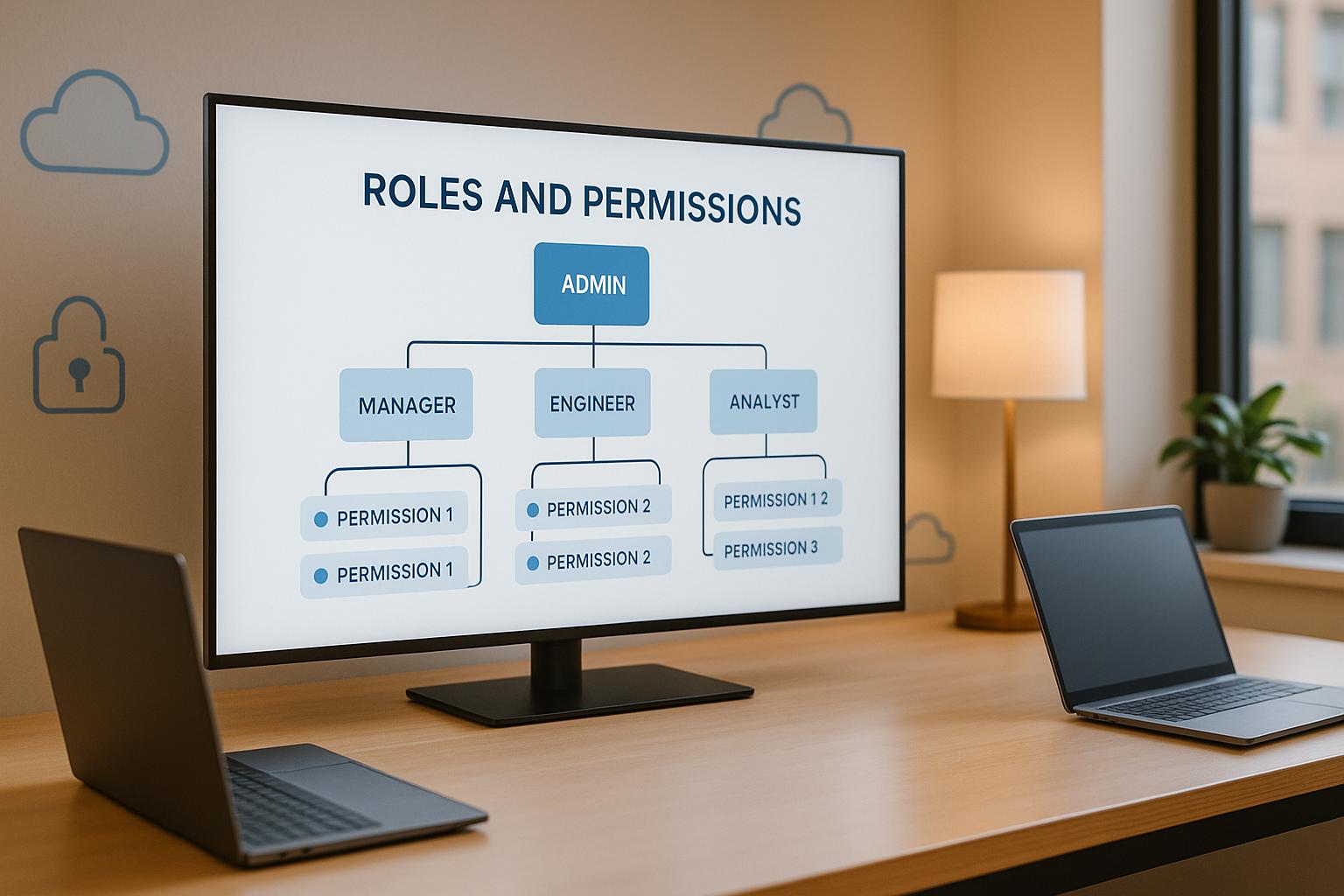Want faster, more reliable software delivery? Combining Kanban and Continuous Delivery is the answer. Kanban visualizes workflows and limits tasks in progress, while Continuous Delivery ensures frequent, automated software releases. Together, they streamline development and eliminate bottlenecks.
Key Benefits:
- Visual Clarity: Track tasks from start to finish.
- Fewer Bottlenecks: Spot and fix delays early.
- Consistent Delivery: Predictable, high-quality releases.
Quick Steps to Start:
- Set Up a Kanban Board: Create columns for each workflow stage (e.g., Development, Testing, Deployment).
- Use WIP Limits: Control how many tasks are active in each stage.
- Automate Testing & Deployment: Speed up releases and reduce errors.
- Track Metrics: Monitor lead time, cycle time, and throughput for continuous improvement.
| Aspect | Kanban + Continuous Delivery |
|---|---|
| Release Frequency | Daily/On-demand |
| Work Visibility | Full transparency |
| Process Control | Automated management |
| Delivery Predictability | Consistent and measurable |
Kanban and Continuous Delivery are your go-to tools for smoother workflows and faster releases. Start small, track progress, and refine over time.
Lead Time VS Cycle Time and How Kanban/Lean Can Help ...
Kanban Main Principles
Kanban's core principles are key to making your continuous delivery pipeline run smoothly. They help create an efficient workflow, ensuring software delivery is both fast and reliable.
Creating Visual Workflows
Visual workflows are at the heart of Kanban. A well-structured Kanban board makes tasks visible, helping teams quickly spot and address bottlenecks.
Card Organization
- Use cards to represent individual work items.
- Include key details like task descriptions, priorities, and dependencies on each card.
- Add visual cues (like colors or icons) to flag blockers or highlight priorities.
Column Structure
- Common columns include: Backlog, In Progress, Testing, and Done.
- Customize columns to match the stages of your delivery pipeline.
- Each column represents a specific step in your workflow.
By aligning your visual workflow with the stages of your deployment pipeline, you can streamline development and releases.
Work in Progress (WIP) Limits
Once your work is visualized, the next step is controlling it. Set clear WIP limits to help teams focus on finishing tasks instead of starting too many at once.
Suggested WIP Limits by Column
| Column | Suggested WIP Limit | Why It Works |
|---|---|---|
| Development | Team size - 1 | Supports pair programming while keeping focus. |
| Code Review | Team size ÷ 2 | Ensures reviews are timely without overloading reviewers. |
| Testing | Team size ÷ 3 | Avoids testing bottlenecks while maintaining quality. |
| Deployment | 2-3 items | Keeps releases smooth and avoids congestion. |
Flow Management
After setting WIP limits, the focus shifts to maintaining a steady flow of work. This involves regular monitoring and making adjustments as needed.
Cycle Time Tracking: Measure how long tasks take to move through the pipeline. This helps pinpoint where delays happen and where improvements are needed.
Daily Standups: Use daily standups to:
- Check the board's status.
- Identify and address blocked tasks.
- Adjust WIP limits if necessary.
- Decide which tasks to pull next from upstream stages.
Key Flow Metrics
- Lead time: How long it takes from request to delivery.
- Cycle time: How long it takes to complete a task after starting it.
- Throughput: The number of tasks completed within a specific timeframe.
- Quality metrics: Includes defect rates and customer satisfaction levels.
Setting Up Kanban for Continuous Delivery
To make Kanban work for continuous delivery, you’ll need to customize your board and rules to fit the process.
Building Your Kanban Board
Your Kanban board is the backbone of your continuous delivery pipeline. Create columns that represent each stage of your workflow, such as new requests, development, in-progress, testing/review, pre-production, and production. Clearly define the entry and exit criteria for each column so everyone knows when and how work moves forward.
Work Items and Rules
Organize your work into smaller, manageable tasks that can flow smoothly through the pipeline. Set clear rules for how items move between stages, including review and validation steps. This consistency ensures nothing slips through the cracks. Once your board and rules are in place, you can shift focus to monitoring progress effectively.
Setting Limits and Tracking Progress
Use WIP (Work In Progress) limits to keep the workflow steady and avoid bottlenecks. Start with conservative limits based on your team’s capacity, and fine-tune them using performance data over time. Keep an eye on metrics like cycle times and efficiency. Add visual cues to flag tasks that are stuck or approaching capacity, so you can address issues quickly.
sbb-itb-97f6a47
Measuring Kanban Performance
Tracking Kanban performance is key to improving your continuous delivery process. Use specific metrics and visual tools to evaluate and refine your workflow.
Time and Output Metrics
In a continuous delivery setup, metrics provide insights into release efficiency. Focus on these key measurements:
- Lead Time: The total time it takes from a request being made to its delivery.
- Cycle Time: The time spent actively working on a task.
- Throughput: The number of tasks completed in a set period.
Flow Diagrams and Analysis
Cumulative Flow Diagrams (CFDs) are a great way to visualize work distribution, identify bottlenecks, and check the stability of your process. Reviewing these diagrams can help you spot areas that need attention and improvement.
Kanban Software Tools
Pick a Kanban tool that offers real-time updates, tracks metrics automatically, and integrates well with your deployment pipeline. These tools simplify performance tracking and ensure clear visibility, making it easier to maintain an efficient delivery process.
Kanban Success Tips
Improve your workflow by breaking tasks into smaller pieces, automating repetitive work, and regularly incorporating team input.
Small Work Batches
Divide work into smaller, focused tasks. This approach keeps things moving smoothly, allows for quicker feedback, and makes it easier to integrate tasks into a continuous delivery process.
Automation and Release Cycles
Once tasks are broken into smaller pieces, focus on automating repetitive processes. This helps maintain a steady workflow and reduces the chances of human error. Set up tools like automated testing, continuous integration, deployment scripts, and updates directly on Kanban cards. Automation not only speeds things up but also gives your team more time to focus on critical tasks. Regular team feedback can then help tweak and improve these automated systems.
Using Team Feedback
Short daily check-ins and periodic reviews are great for spotting obstacles and improving workflows. Comprehensive retrospectives provide a chance to address recurring issues and refine processes further, especially when it comes to automation and delivery pipelines.
Conclusion
Key Takeaways
Kanban simplifies continuous delivery by focusing on its main principles: visualizing work, setting WIP limits, and managing flow. These elements create a solid framework for efficient digital product development.
By combining Kanban with continuous delivery, teams can achieve:
- Better workflow visibility, leading to shorter lead times
- Less context switching, thanks to WIP limits
- Improved collaboration within teams
- Quicker feedback loops
- Higher-quality outputs through automated testing and deployment
These advantages lay the groundwork for effective implementation.
How to Begin
To get started, evaluate your current workflow, create a simple Kanban board, and refine it using team input and performance metrics.
The Top Consulting Firms Directory can connect you with experts who offer services like:
- Workflow evaluation and optimization
- Kanban board design and setup
- Automation integration for testing and deployment
- Team training on Kanban methods
- Performance monitoring and improvement strategies
Implementing Kanban successfully requires ongoing adjustments, open communication, and consistent team feedback.


